Monastery of St Bartholomew
Albayrak Kilisesi
/ By Josh
Cost: Free
Great for: Armenian History, Church History, Vaspurakan, Church Architecture
NOTE: While it may look like access to the site is restricted, it is open to visitors. When the Turkish military abandoned the site they left behind sandbags, barb wire, and towers making for a rather unfriendly site.
The monastery of St Bartholomew (Surp Bardoughimeosi Vank) sits on the shoulder of a broad hill surrounded by the fertile fields of the upper Zap River valley, a tributary of the Tigris River. The church, one of the largest and grandest in the region, is now in a state of ruin with much of the roof structure, towers, domes, and vaults now collapsed into a heap of rubble in the interior of the church.
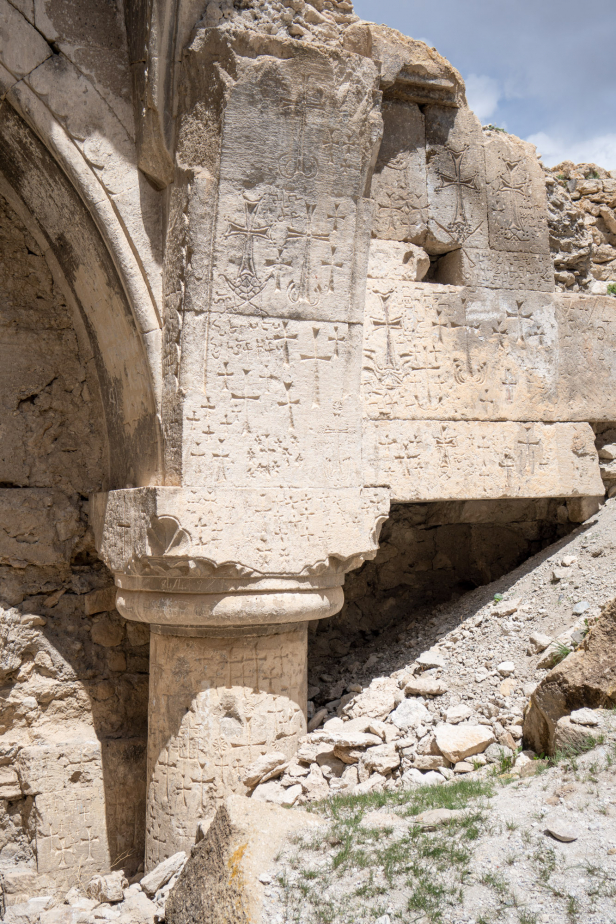
The exact history of the site is uncertain, though the advantageous site makes it likely that it has been inhabited for millennia. The village, now known as Albayrak (Turkish for ‘Red Flag’), was known as Ashkert or Ashad to the Armenian population and is recorded as being the site of a monastery in the 10th century. At this time the monastery was simply referred to as Ashadavank or “Monastery of Ashad”. Later records from the 13th century mention the monastery as the monastery of St Bartholomew.
The monastery was named for St Bartholomew, a 1st century saint and apostle of Jesus who is credited as having brought the gospel of Jesus Christ to Armenia and as far as India along with his fellow apostle Jude “Thaddeaus”. According to some legends Bartholomew was martyred at this site, though there are two other sites connected to the death of St Bartholomew (one in Baku Azerbaijan and another nearby in Derbent, Russia along the shores of the Caspian Sea).
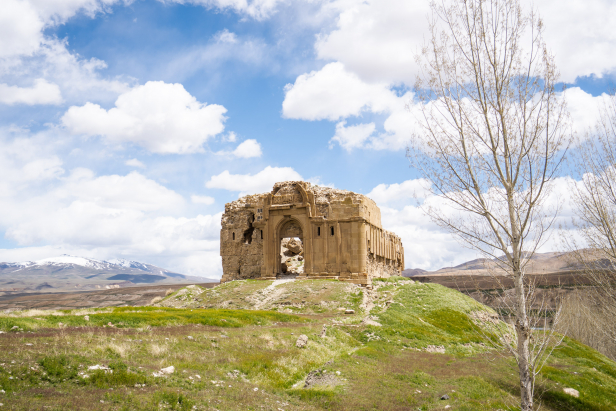
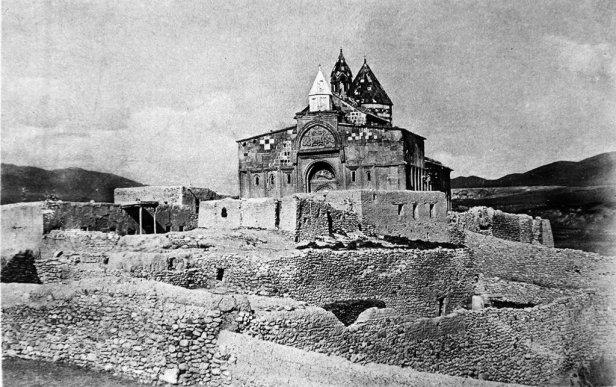
The monastery evolved over time, slowly expanding into its grand final form. With its missing roof and domes it’s easy to assume that the church was designed as a simplified basilica consisting of a unified rectangular plan. Entering the church it becomes immediately clear that the design is anything but simple. With the help of historic photographs from the the late 1800’s up to 1915 we have a very complete understanding of this unique piece of architecture.
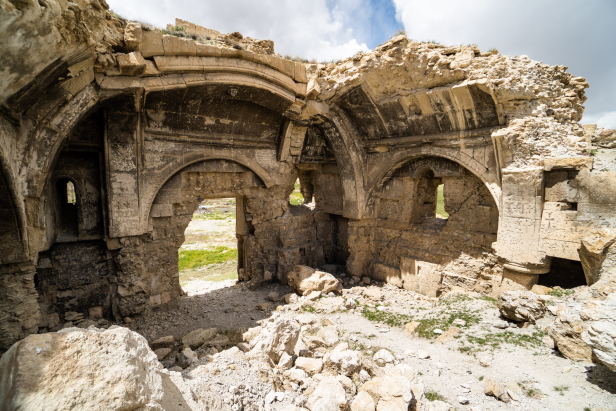
The church can be understood as two slightly unequal halves of the the rectangular floor plan with the naos occupying the east, and the generous gavit/zhamatun (Narthex) occupying the west. The naos is roughly a cross-in-square with the central dome being a high 12-sided drum capped with a pyramid in the Armenian style. The north and south arms of the cruciform are barrel vaults running parallel to the nave rather than radiating from it. The apse in the east wall is unusual in its depth and shape though little remains apart from a simple barrel vault. A pair of chapels, which appear as oversized sacristies, are set in the space to the north and south of the apse. A broad door, beautifully carved, allowed access from the narthex into the naos.
The western half of the church was the gavit/zhamatun, serving as a forecourt or entry room. According to the historic photographs, this portion was rather taller than the naos (apart from the peaked dome). The high vault of this section was supported by a set of thick rib-vaults running parallel to the walls. These ribs leap from a set of 6 pilasters and 2 freestanding pillars. This supported another set of inner ribs forming a ‘#’ shape making for a very unusual square vault (the nearby Surp Khach of Aghpag uses the same technique to create its very unusual square-domed naos). This gavit/zhamatun portion was topped with a small cupula on pillars, now long collapsed, which served as a belfry (this is rather unusual in relation to the placement of belfries in the region’s other churches which tended to see the belfry set in front of the gavit/zhamatun – as per Varagavank – or separate and next to the building – as per Surp Khach on Aghtamar/Akdamar).
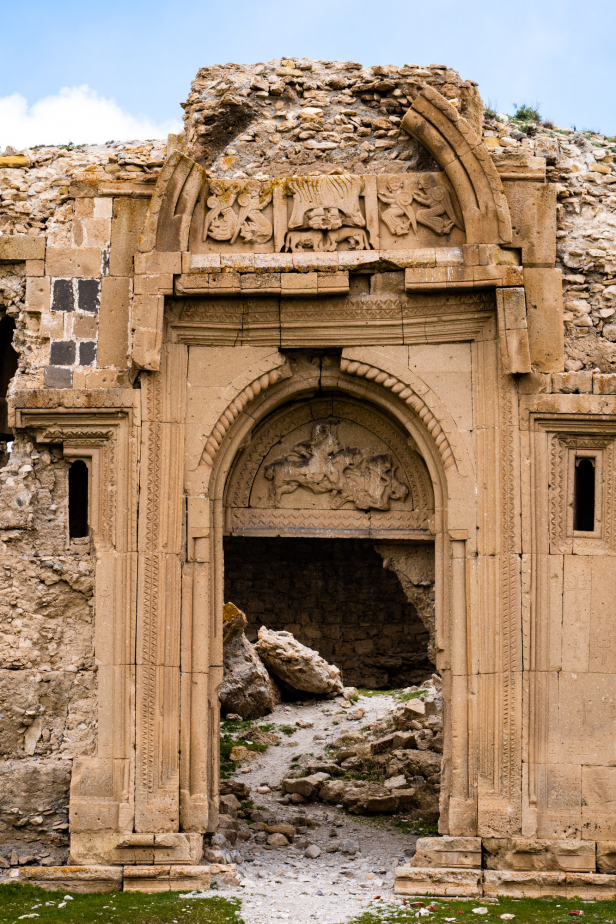
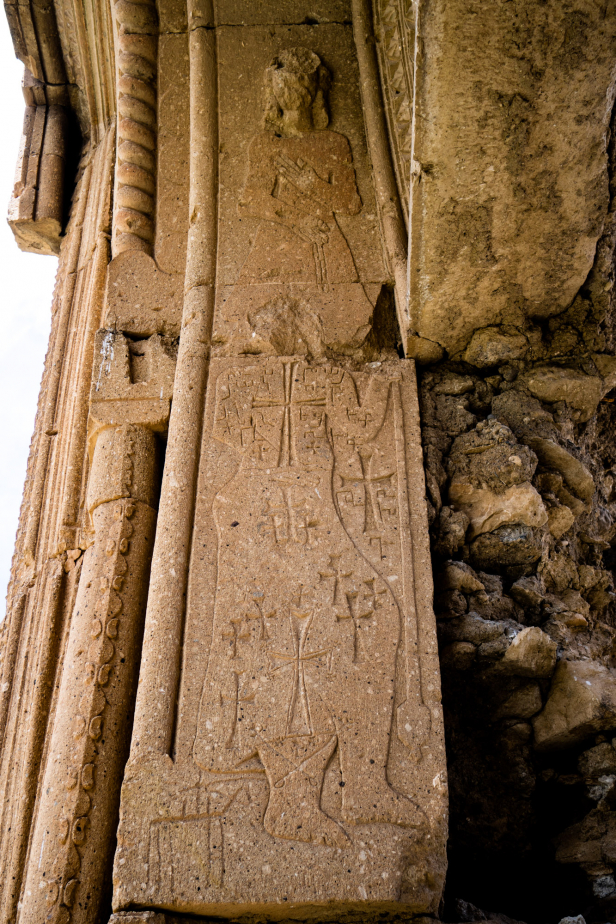
While the outer walls of the church are relatively simple, consisting of a horizontal moulding and narrow regularly spaced pilaster-like ribs, the western wall is full of exquisite artistry. The doorway is topped by a set of three arches, the upper two with broad tympanum panels bearing bas reliefs. Only the lower section of the upper panel has survived though photographs record a scene with what appears to be angels kneeling before the enthroned Christ with a pair of bulls under his feet and a pair of birds at his shoulders. The lower tympanum is occupied by what appears to be a mounted warrior. The original door with its blank tympanum has been lost. On either side of the doorway opening are a pair of niches that have survived bearing etched crosses. Atop the entrance was a third spire, an octagonal drum and pyramid.
Subscribe to The Art of Wayfaring
The church was a part of a wider monastic complex with numerous buildings of low-quality construction.
Today the site has a rather unusual military appearance. According to the reports we’ve been able to find, the hillside that the church and monastery occupied were used as a military outpost until 2012. The old village near the church and monastery’s outer buildings were all demolished to make room for the outpost with its turrets, razor wire, and walls of sandbags.
How To Get There
General
The village of Albayrak is far off the beaten trail but not difficult to access. While there is minibus/dolmuş service via the larger center of Başkale this would make for a long trek from Van. If driving your own car, head south out of Van using the Van-Hakkari road (D975) making sure to turn left towards Hakkari at the junction near Koyunyatağı and the Çavuştepe Castle ruin. Follow this road as it winds along the Hoşap river valley, past Hoşap Castle till you reach the Zap Valley. There are two roads labelled as the Albayrak road and both work though signage is poor so you may miss the first. This road winds up the valley and through the village of Albayrak, once on the far side of the village the monastery is impossible to miss. Total distance from Van is about 100 kms.
For more about car rental and driving in Turkey make sure to read our full drivers guide.
Where To Stay
There is nowhere to stay in the immediate area. The closest major centers with hotels are Hakkari City in Hakkari Province or Van city with a fair selection of hotels and pensions to choose from.
Other Tips
Planning on visiting St Bartholomew Monastery? Make sure to check out the nearby Church of the Holy Cross of Aghpag in Yanal village or our many other guides to the Armenian churches and monasteries of Lake Van and Vaspurakan.
Subscribe to The Art of Wayfaring
Have any tips or info to add? Spot any mistakes? We’d love to hear about it.